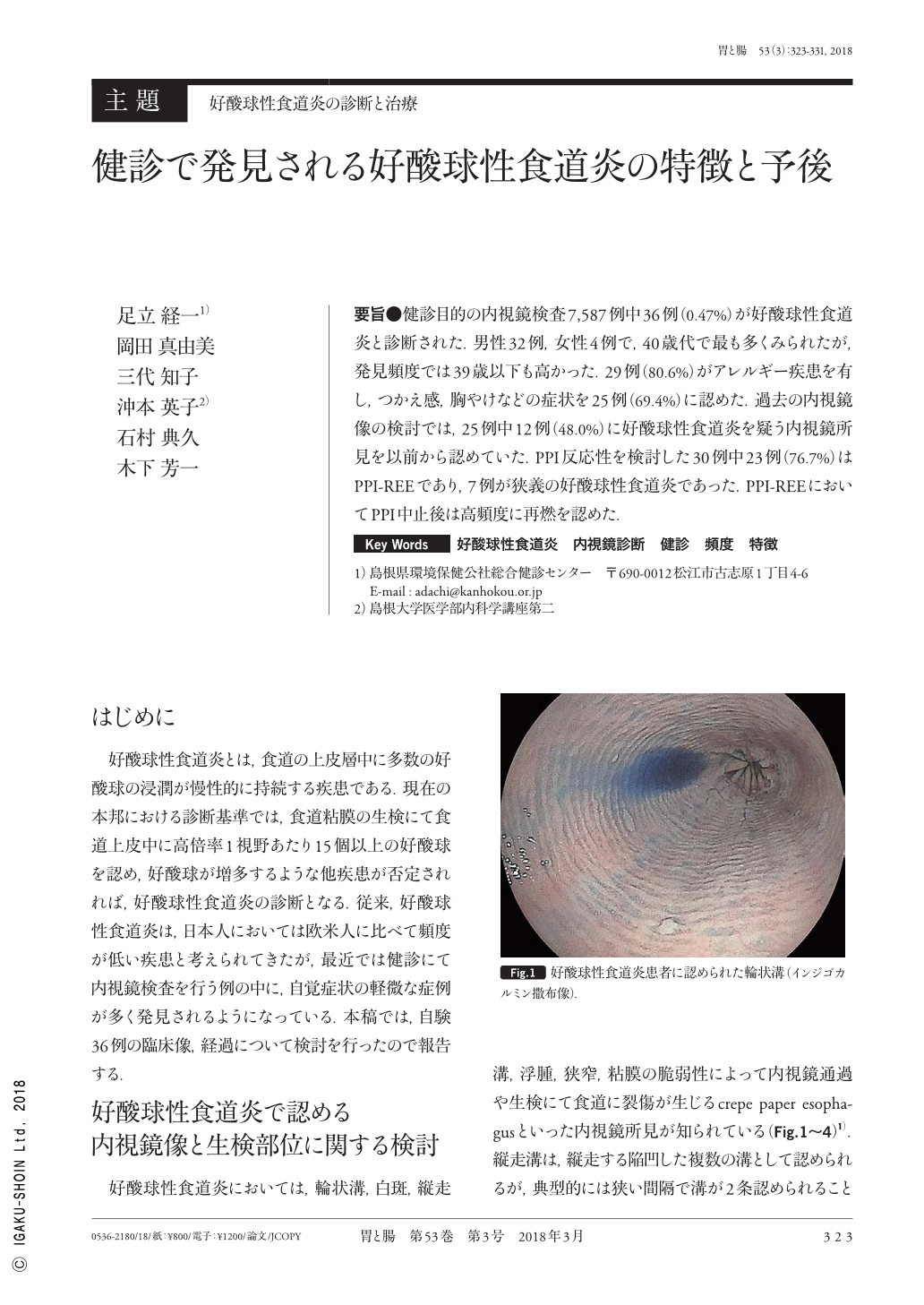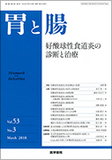Japanese
English
- 有料閲覧
- Abstract 文献概要
- 1ページ目 Look Inside
- 参考文献 Reference
- サイト内被引用 Cited by
要旨●健診目的の内視鏡検査7,587例中36例(0.47%)が好酸球性食道炎と診断された.男性32例,女性4例で,40歳代で最も多くみられたが,発見頻度では39歳以下も高かった.29例(80.6%)がアレルギー疾患を有し,つかえ感,胸やけなどの症状を25例(69.4%)に認めた.過去の内視鏡像の検討では,25例中12例(48.0%)に好酸球性食道炎を疑う内視鏡所見を以前から認めていた.PPI反応性を検討した30例中23例(76.7%)はPPI-REEであり,7例が狭義の好酸球性食道炎であった.PPI-REEにおいてPPI中止後は高頻度に再燃を認めた.
Among 7,587 cases who were screened by upper GI endoscopic examination, thirty-six were diagnosed with eosinophilic esophagitis. Thus, its prevalence was 0.47%, and there were 32 and 4 male and female cases, respectively. Twenty-nine cases(81%)had some allergic disease, and 25(69%)had some upper GI symptoms, such as dysphagia and heartburn. Twelve of these 25 cases(48%)had shown some endoscopic findings of eosinophilic esophagitis in previous endoscopic examinations. Twenty-three of 30 cases(77%)were considered to be PPI(proton-pump inhibitor)-responsive esophageal eosinophilia(PPI-REE), and the other 7 cases were diagnosed as EE in the narrow sense. Disease recurrence was frequently observed after cessation of PPI administration in cases with PPI-REE.

Copyright © 2018, Igaku-Shoin Ltd. All rights reserved.


